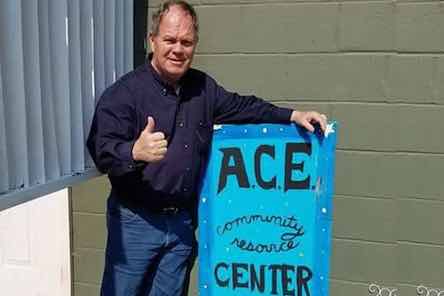Every day in Southern Delaware, I work in the trenches and on the front lines of poverty, fear, homelessness, loneliness, isolation, addiction and mental illness.
People ask me about what I am seeing and experiencing out here on the front lines. In my opinion, there are the “roofless” and then there are the “homeless.” Being roofless means living rough. You are living outside with no cover. It also means most
times…..ROOT-less with little or no ties,
Being roofless mostly means living in active addiction and/or enduring an untreated mental illness. Living roofless is extremely exhausting, very fluid, dangerous, dark and unpredictable. It also costs about $10 a day to be roofless because of the needed supplies and provisions that you normally would NOT buy if you had a hard roof overhead. Many of the roofless are also smokers so you can add at least another six or more dollars to the $10 dollars a day cost of being roofless. Living roofless is also ruthless. It is brutal. If you are chronically roofless living outside, then you will die 25 years earlier than the average person who lives inside.
Now, what does homeless mean?
Homeless means you do have a hard roof overhead and there is much more accountability about your behaviors. You are living in an emergency shelter, an abandoned building or living on a couch… also known as “couch-surfing.” Being homeless could mean being doubled up or tripled up with family members.
Being homeless also could mean living in your vehicle. You can’t sign a lease or a deed in your own name.
Being homeless means you have an income of some sorts but it is not enough to pay rent or sign a deed/mortgage.
You purchase a car instead. You are a low wage earner and you are working on your recovery and your sobriety.
Being homeless also means living in transitional housing or group housing or shared living without a signed lease.
You are precariously housed living under the graces of another person or people. I estimate there are 100,000 Delawareans who are homeless and 30,000 Delawareans who are roofless.
There are 200,000 Delawareans with a mental illness. There are 100,000 Delawareans in active addiction. Of course, there are many Delawareans who struggle with both addiction and mental health conditions.
With the start of the New Year, we have many huge social problems in front of us to solve. Population health experts routinely state that 1 in 5 suffer with a mental illness. 1 in 10 with a severe addiction. There are a little less than 1 million Delawareans in total. Twenty percent have a mental illness and 10 percent have a severe addiction. As far as the roofless/homeless population, I am involved in a “point-in-time” study each year that helps to count the Delawareans who are unsheltered during one night in January.
But I believe this “point in time count” is much less than the actual number of roofless because the unsheltered are near invisible and difficult to engage or find late at night.
I also factor in the current housing wage of $21.70 an hour and the lack of affordable housing in the state. In other words, in order to afford a typical housing situation in Delaware, a person needs to earn at least $21.70 an hour. Many people are earning much less than $21.70 an hour.
Another fact is that there are 115,000 Delawareans on Medicaid, so this means that these folks are making under $12,000 a year. Monthly rentals are averaging $1,000 to $1,200 a month so there are thousands being priced out of the rental market.
There are thousands more who live in their vehicles and they don’t look “homeless.” They work very hard at blending into normal society. I also estimate that there are only 400,000 Delawareans who can actually afford to live in Delaware.
This leaves approximately 600,000 Delawareans struggling with their finances. As far as citizens who are involved with the criminal justice system: 7,000 Delawareans are incarcerated right now. Another 20,000 Delawareans are being supervised in the probation/parole system.
And of course, a large percentage of these folks coming from the DOC are in severe poverty when released and continue to be once they try and move forward in their difficult lives.
Jim Martin is the director of the A.C.E. Peer Resource Center in Seaford. He can be reached at Jimmymartin767@gmail.com.
